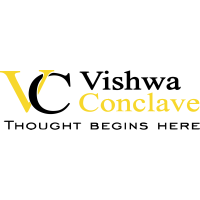This Article has been contributed by Doc Aggarwal (A Good Friend)
It provides a glimpse into the selfless service of medical fraternity in fight against the Pandemic
that’s really good news
Lila and Tibs… The silent bastions on whom it all has been resting for the past month. Ever since the second wave broke, they have been at it. Day in and day out, sleeping, living, eating, breathing COVID.
Lila is the elder one… by some one year or so, and would never let Tibs forget that. Tibs is a little younger, considers himself a little stronger. She is bubbly, charming, enthusiastic, easy to smile and vivacious. Tibs on the other hand is the silent, quiet type. They are both efficient, knowledgeable, concerned and above all caring.
They are the two doctors at the Station Medicare Centre (SMC), at an Air Force Station, somewhere in the heartland. There are others, but one has got COVID, while the other was, well, out for some time. So just Lila and Tibs. Usually, its not that tough. Oh, they do have a clientele of 8000 or so, but they manage. What tipped the balance was April.
In the month of April, the SMC has had 230 cases of COVID, positive on Rapid Antigen Test (RAT). This means that there would be another 1000 lurking around here and there, some asymptomatic, some scared to come over lest they are quarantined, some missed by the RAT, whatever. But 230 is a lot.
Lila is newly married, her husband Sudhir is posted far away. She could barely squeeze in a honeymoon before the China virus played spoilsport. Tibs managed a brief trip to his steady girl and came back with COVID a few months back. Hasn’t managed to meet her since. They still remain cheerful.
So let’s see what it means, looking after 230 COVID patients, by two doctors. 15 min to 30 min of questions by relatives for 230 patients… CHECK. Getting basic protocol tests ie Blood counts, Renal Function, Liver function for 230 people, regularly, sifting through results, ensuring you don’t miss anything… CHECK. Monitoring SpO2 levels for 230 patients four times a day, keeping track, making sure none are missed… CHECK. Rechecking after a six minute walk test… that’s eight times a day… CHECK.
Then the first person starts showing a little low SpO2 and the next struggle starts. The overloaded local hospital’s first reaction is, we can’t. You manage. Give oxygen in the SMC. So then that is a sudden huge demand on the limited number of people available. But they manage. Running from patient to patient, attending some meetings on hygiene or sanitation or sewage or water, all the time worried about the patient on an oxygen concentrator at the SMC.
Lila develops a cough. Fever is 102 deg. She has been double masking, hand sanitizing, social distancing, covering herself. But she knew this was coming… someday, somehow. She walks up to Tibs, to find him coughing, bodyache, fever is 100 deg. They sit down. Now what? What happens to the 230? They sit silent, drinking nimbu-paani after nimbu-pani, trying to figure out what to do. Obviously, there is no logical answer. If they see patients, they could be super-spreaders. If they don’t, who does?
Lila resolves. Pops two tablets of Paracetamol, asks Tibs to go home and relax. She stays, does her work. Her RAT test is negative. She will get an RT-PCR tomorrow. She wades through the day. It was horrible, high fever, outside temperature 42 deg Celsius, cough, bodyache.
The next day both Lila and Tibs undergo an RT PCR. Buzzed with Paracetamol, wade into the day, like they have over the past month. Fever varies between 99 and 102 deg for both. The bodyache is killing. The cough is bad. Exhausted they go back home.
Lila is in bed hugging Sudhir’s photograph, waiting for sleep to come. Tibs calls… RTPCR results came back. It is NOT COVID. It is just exhaustion, he says.
Oh… that’s really good news, she says. She hugs Sudhir’s photographs tighter and goes to sleep.
Tomorrow is another day
For regular updates please register here –


